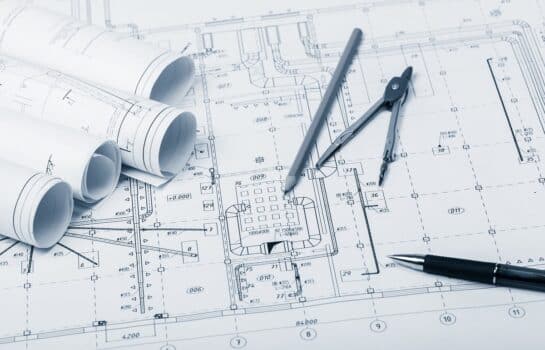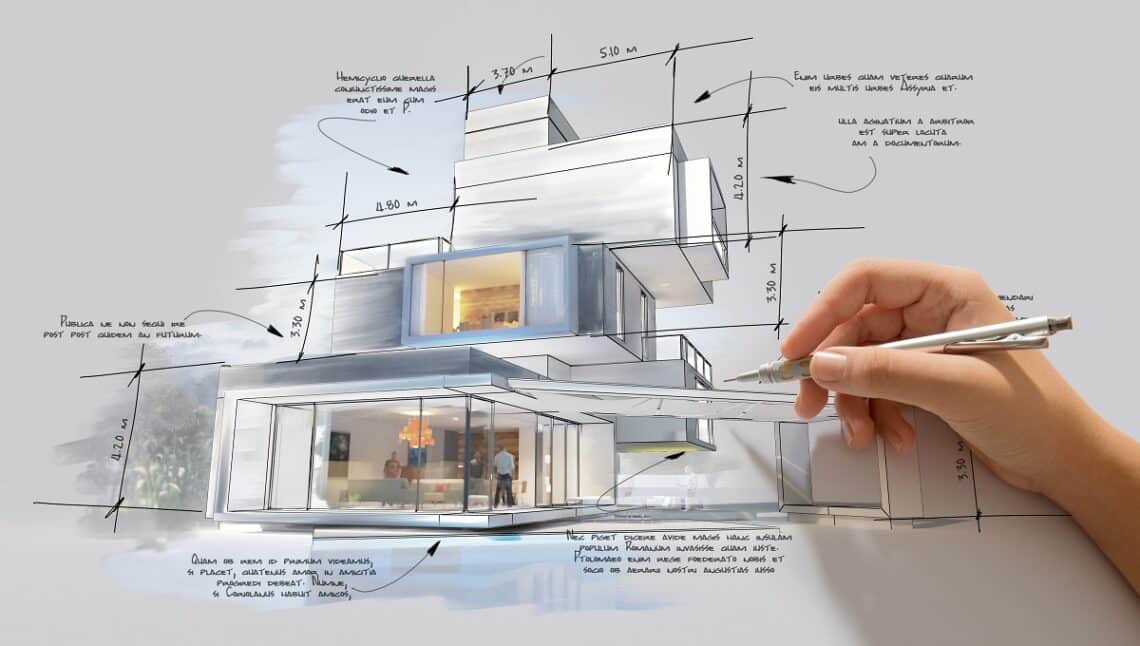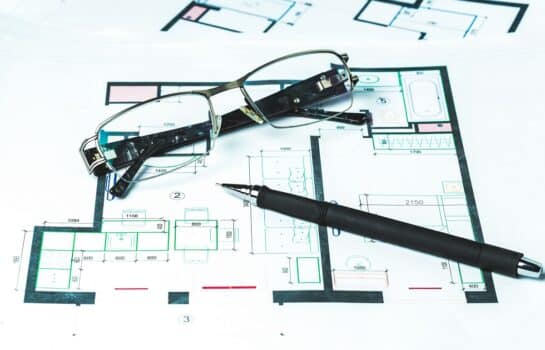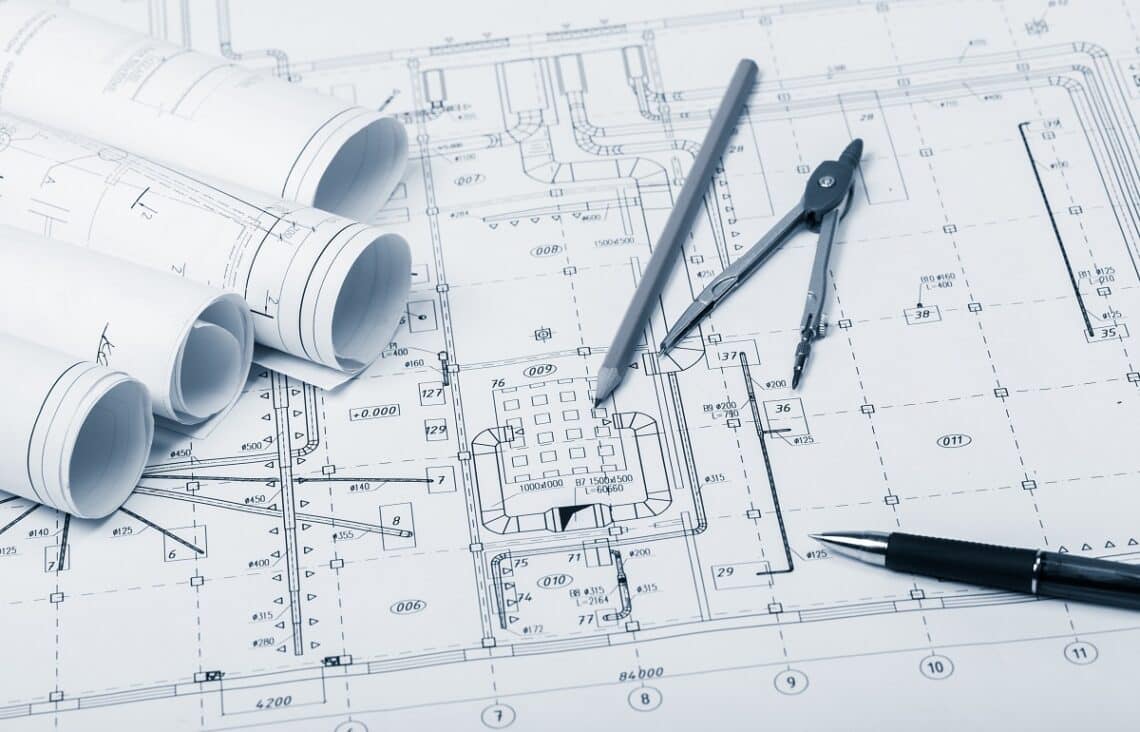Most of us are used to seeing architectural projects after their completion.
If you have ever been impressed by a building that seems out of the world, then rest assured, it had to go through numerous design decisions. After all, an exemplary architectural plan involves working in various phases. Even when it comes to design, the process is divided into five convenient steps to streamline the project.
Indeed, the first step towards building your dream project is to have a good design. Not to mention how professional architects often note that they can sense the probable success rate of a project by looking at the initial design plans.
All of this may sound intimidating if it’s your first time working in a design team — especially if the project begins with the schematic design phase. Hence, we thought of coming up with this crash course on the topic.
So, without further ado, let’s begin!
What Is Schematic Design?

Schematic design occupies either the first or the second place in the usual five phases of creating a design for your project. Simply put, this is the first step you take to have a realistic understanding of what you’re about to build.
In this phase, the drawings and sketches won’t be as technical as it gets in the design development phase. But, it will still have the key components needed in a building, including potential plans for the indoors and outdoors. Indeed, the schematic phase requires multiple sketches based on the ideas that have been discussed in the programming stage.
Moreover, both architectural and spatial designs need to be made during his step. If any flaws are found, team members can consult each other to find proper design solutions. That said, an architect needs to maintain contact with the project owner and other decision-makers to develop appropriate schematic drawings.
Even though it’s an early stage, the schematic design does include drawings like the site plan, floor plans, and elevations for a construction project. Both handmade and computer-rendered sketches are used for a schematic design. You can find the difference between the two in our article about freehand drawing and computer drawing.
Do note that site analysis is also a crucial component of coming up with great schematic designs. However, this phase does call for patience and attention as the designs will decide if the clients are ready to move forward with a project.
Who Is Involved In The Schematic Design Phase?
Since this is the first phase of making a design, the whole team must be involved in the project. But, the client and the project head will be the ones mainly engaged in it. In the case of an individual architect, the project owner or client will consult them directly.
For creating successful schematic design drawings, the owner first needs to come up with some basic ideas and share them with the architect. Some clients are more enthusiastic about being involved in day-to-day activities, while others leave it to the architect to use their ideas.
That said, the owner or client is mostly involved in a construction project during the schematic design phase, as things can get a bit more technical hereon. Even during this process, the architect bears the responsibility of explaining the design elements to the client in a detailed yet simplified manner.
Another key aspect of this phase is the importance of a good relationship between the team members. Ideas need to be shared freely, and there will also be plenty of rejections. At the same time, it is an excellent opportunity for hearing out diverse ideas and concepts and taking the most suitable approach.

What Is The Difference Between Conceptual And Schematic Design?
When it comes to the basic difference, most architects state that conceptual designs are more abstract than schematic designs. But of course, there are differing opinions on the subject.
For instance, an important organization like RIBA (Royal Institute of British Architects) doesn’t even mention schematic designs in their phases. On the other hand, the AIA (American Institute of Architects) emphasizes both aspects of design.
Furthermore, creating a concept design is sometimes considered a precursor to making a schematic design that contains spatial and architectural elements. For an independent architect, it would depend on their personal preference for either layout. However, if you’re part of a project team, it’s best to ask the project manager or head architect about the relevant design phases.
What Is The Difference Between the Design Development Phase And the Schematic Design Phase?
When you look at the five design phases, you’ll notice that the design development phase closely follows the schematic design phase. This may make you think about the necessity of having two similar steps for creating drawings.
As we have already mentioned, there will be an exchange of diverse ideas during the schematic design phase. And in the end, the project manager or client will only choose a few of these. Simply put, the design development stage is needed to refine the selected drawings into more concrete versions.
That said, the schematic design phase is just as important, if not more, as all the brainstorming builds the foundation of the building design.
Moreover, drawings from the design development phase include details regarding interior elevations, sectioning of the room, and planning of doors and windows. At the same time, things start to get real during the design development stage as you are going to move toward construction details.
This stage might also call for the mention of a budget, and the architect may need to help the clients choose the right materials. Here, the designer’s responsibility lies in ensuring that the drawings and the plan are foolproof for the construction team to go ahead with it.
Schematic Design Process
Now that you know the basics of the schematic design phase, let’s get into the process.
The first steps are programming and collecting ideas for the project. As this is a collaborative effort, coming up with a program may take several meetings.
Here, the architect will try to understand the vision held by the owner. After all, the owner’s ideas are considered the driving force behind the schematic stage. Along with sharing their vision, the owner may give the architect access to the basic layout of the space where the final construction will take place.
The architecture team then finds out the expanse of the project to set the scale, dimensions, and goals. For this, an architect usually works with a team of experts that conducts extensive research on the project.
Their observations include site analysis, as well as finding out about the zonal building laws or code elements. They also help the architect scale the ideas according to the requirements.
Based on the gathered information, the architect then develops several design elements that might work for the project. After that, it’s an elaborate exhibition of teamwork that sees the project to the end.
What’s more, both the architect and the owner will keep on checking the designs to make sure it matches the initial vision. The process usually drags on for a long time if the architect and the owner cannot agree on specific designs.

What’s Included In The Schematic Design Drawings?
You already know now that there are several design phases. That said, it may be challenging to identify the elements included in the schematic design.
Nevertheless, you can start with an essential one, which is to map out the area where the construction is to take place.
The schematic drawings should also include a description of the building systems. Usually, they are the structural, mechanical, plumbing, HVAC, and electrical components. And, the relationship between the elements will also come into play in the design.
Additionally, designers like to insert essential devices like fire alarms, phones, and security elements into the drawings. On the other hand, a schematic drawing won’t have detailed interior design elements or any other special features that can be added later.
Here are some significant components of the schematic drawings:
1. Building Elevations
A building elevation draft provides a picture of how it will appear if you stand in front of it. To do this, the designer will include visuals for all four sides — these are known as the east, west, north, and south elevations.
Based on the architect’s ideas, the designer may also choose to include interior elevations in the schematic drawings. These could be vertical surfaces present inside the building, such as the wall of a corridor.
2. Existing Site Plan
This is also referred to as the “existing conditions plan.”
It’s obvious that a building won’t exist in a vacuum. So, while creating a design, you’ll need to include the elements already present in the area. The information for this is gathered during the site analysis.
In other words, a designer would need to include elements, like existing roads, buildings, water bodies, and even landscaping. Moreover, they may need to work around buried utilities, like gas and electricity lines.
3. Floor Plan
One of the most interesting features of the schematic design process is the floor layout. This includes a top-down horizontal view of the building. In other words, a floor play may look like the roof has been chopped off four feet from the floor to provide a view of the insides. These plans often include the dimensions of spaces, pieces of equipment, and furnishings apart from various other construction details.
4. Site Plan
The site plan drawing includes a view of how the project is supposed to look after completion, much like making a building model out of Lego blocks. Sometimes, an architect may tell the designer to add improvements in the plan to reflect the owner’s vision.
If you’re interested to see some successful schematic design concepts, check out our article on the proposed designs for the new St. Petersburg Pier.
What Comes After The Schematic Design Phase?
Moving forward, you may be interested to know what happens after the schematic design phase gets over. Of course, the architects may first pat themselves on their backs for developing multiple design options. After all, the schematic phase can run for months, especially in the case of a big construction project.
According to the standard project program, the next phase is design development. Then, it’s followed by turning in the construction documents. Let’s have a closer look at these steps
1. Design Development
During the design development phase, the architect will be making more detailed drawings of the building project. Moreover, this phase requires including more material details and giving a clear idea of the spatial relationships. Many people like to map out the heating, ventilation, and air conditioning (HVAC) during this phase, while others do it during the schematic phase.
However, an essential part of the design development phase is to map out the materials and furnishing that will be placed in the building. Planning each space or room also takes place during this stage. As budget comes into the picture, ideas may be shifted around and some may be excluded from the project.
Extensive 3D modeling often accompanies the design development stage to give a clearer view of the project design. At the end of this stage, the architect might hope to get the final thoughts of the client about being on the same page.
2. Construction Documents
By now, it’s expected that all the design ideas presented during the last phase have been approved. That said, it’s time to gather everything to make the final drawings that will be used during the physical construction.
During the construction documents phase, the owner has little to no input. So, the architect has to exercise their own judgment while completing the building design. Considering how permits will be given based on these designs, the architect needs to be thorough with the job.
Usually, two sets of drawings are prepared. One gets sent to the permit department, while the other is issued for construction. Obtaining permits do take some time, so it’s better to work on the permit set first and then send it away. Each set includes aspects like floor plans, demolishing plans, interior elevations, structural drawings, plumbing drawings, and several others.
The success of the construction documents phase is revealed during the bidding process when contractors try to get ahold of the building design.

Final Words
That’s everything we had to tell you about the schematic design stage. We want to point out that there isn’t really a clear distinction between the different design phases. Mistakes or design flaws are sometimes found while compiling the construction documents, and changes need to be made accordingly.
However, when you first start with a project, share as many ideas as possible with the architect. This will lead to a better concept design, and the results will also reflect in the schematic design drawings.
As the schematic design process can be a little tedious, you can take help from our article on inspiring things that an architect might like to draw and start gathering ideas.
On that note, we have come to the end of this guide. Do let us know if you have any more queries regarding the schematic design phase.
Until next time!
Related Links
28 Best Online Kitchen Design Software Options
29 Best Bauhaus Books That Showcase 100 Years of Design School
Architect-Designed Homes vs Project Homes
15 Popular Interior Design Trends
10 Best Tips To Promote Architectural Design Businesses
7 Best Container Home Design Software Options
What Is A Linear Foot | Architect’s Information
What Is A Veranda | All You Need To Know
What Is A Pony Wall? | Things To Know





